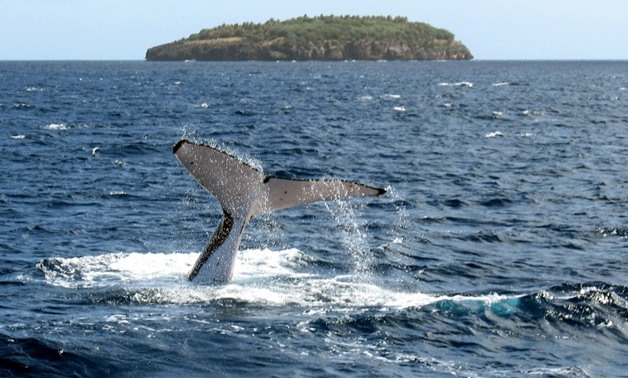
Sharks - AFP
Paris - 23 June 2017: The body size of some whale species diminished by several metres decades before 20th-century factory fishing caused their populations to collapse, researchers said Thursday.
If that pattern holds true for other commercially harvested marine species, a drop in body size could serve as early warning that protective measures are needed, they reported in the journal Nature Ecology & Evolution.
Once a population has crashed, recovery is difficult at best: 25 years after a moratorium on Canada's decimated northwest Atlantic Cod fishery, the sub-species has yet to bounce back.
Hunted since the 18th century, many whale species were saved from extinction by a leaky 1982 moratorium that has still allowed more than 1,000 of the majestic sea mammals to be killed every year.
Researchers led by Christopher Clements of the University of Zurich looked at annual records -- including size and number caught -- compiled by the International Whaling Commission and reaching back to about 1900, when new technologies emerged that turned the hunt into a harvest.
"We show that during this period of commercial whaling, the mean body size of caught whales declined dramatically -- by up to four metres (13 feet) -- over a 70-year period," the study concluded.
Industrial whaling wiped out nearly three million of the animals during the last century, according to a tally published recently in the journal Marine Fisheries Review.
Clements and his colleagues focused of four species that accounted for 80 percent of that haul: sei, fin and blue whales -- the largest animals ever to roam the planet -- are filter feeders, and listed as endangered on the Red List of threatened species. The box-headed sperm whale is probably most recognisable as Ahab's adversary in Moby Dick.
"Fishing pressure remained high until whale populations collapsed and become commercially untenable, whereupon whalers moved on to new species," the study said.
For blue, fin and sei whales, body size started to shrink a couple of decades before the sudden drop off in numbers caught.
For sperm whales, the decline in size was gradual across most of the century, showing up clearly at least 40 years before annual catch levels plummeted.
"Early warning signals were present for all four species," the researchers said.
Adding catch figures into the picture strengthened the predictive power of their model, which they suggest could be applied to fish and other marine animals under intense fishing pressure.
But in the absence of reliable catch data, changes in size and other physical traits "may be used to predict collapse," the study concluded.
Tens of millions of sharks, for example, are killed every year for their fins, the size of which may provide clues on the health of regional or global populations for these top-level predators.
Wild sole, salmon and lobster could also benefit from such an approach.

Comments
Leave a Comment